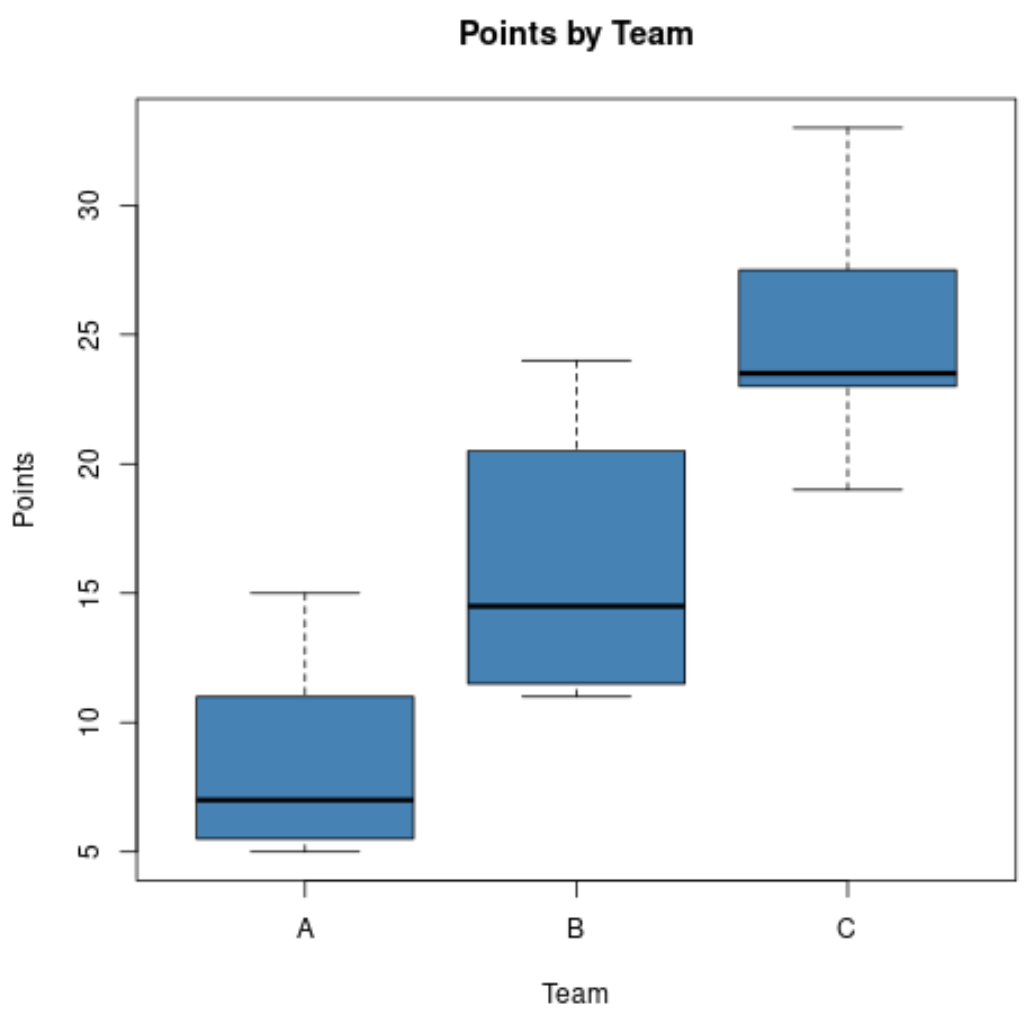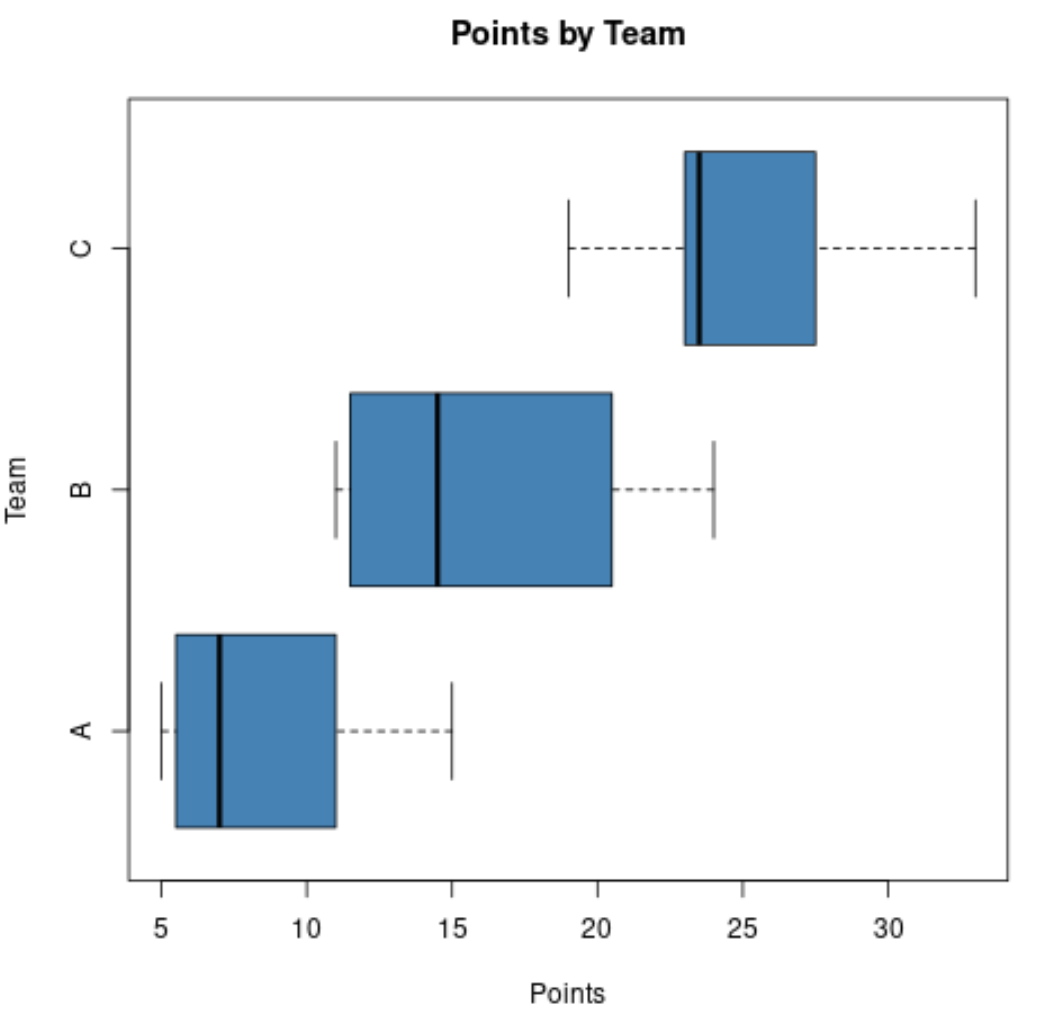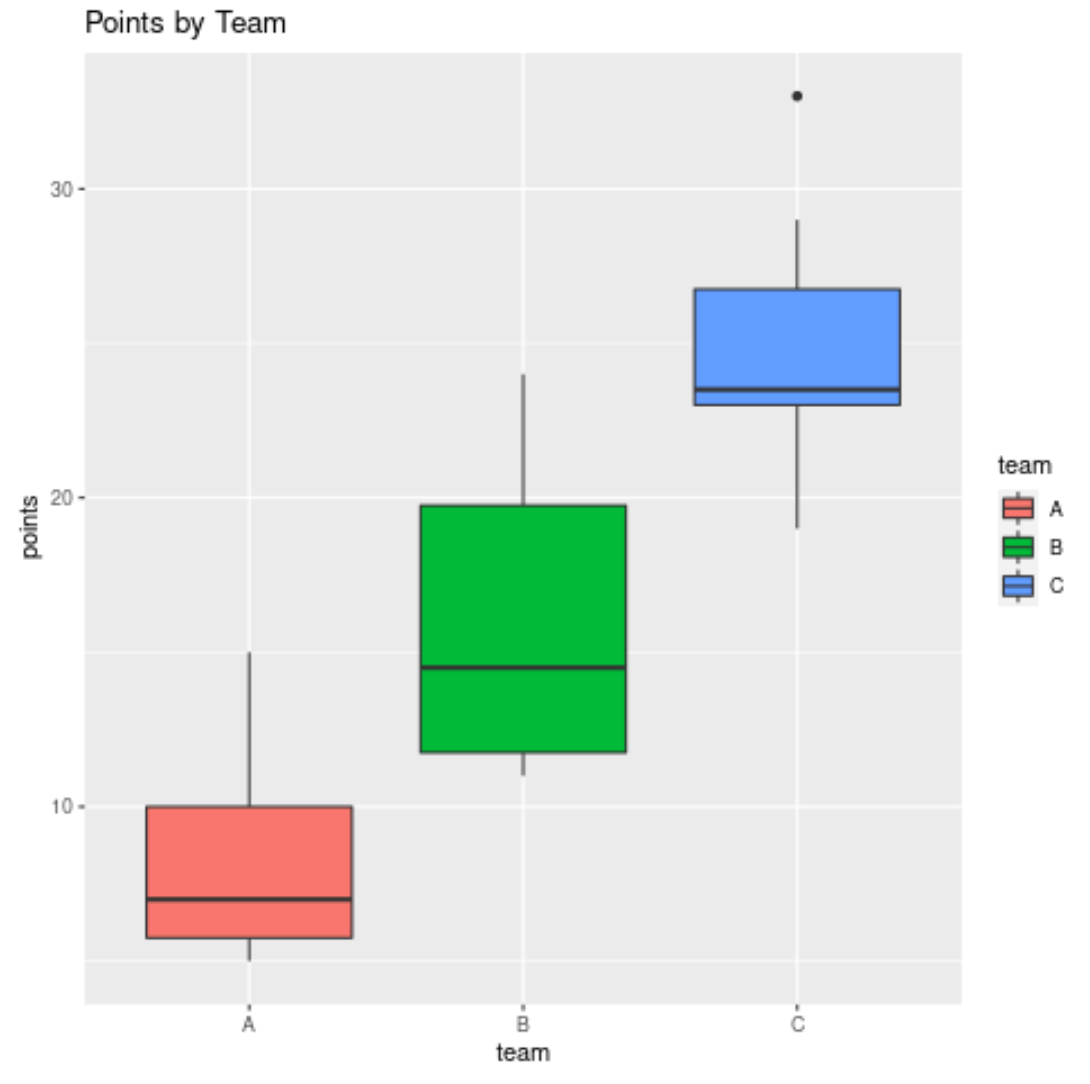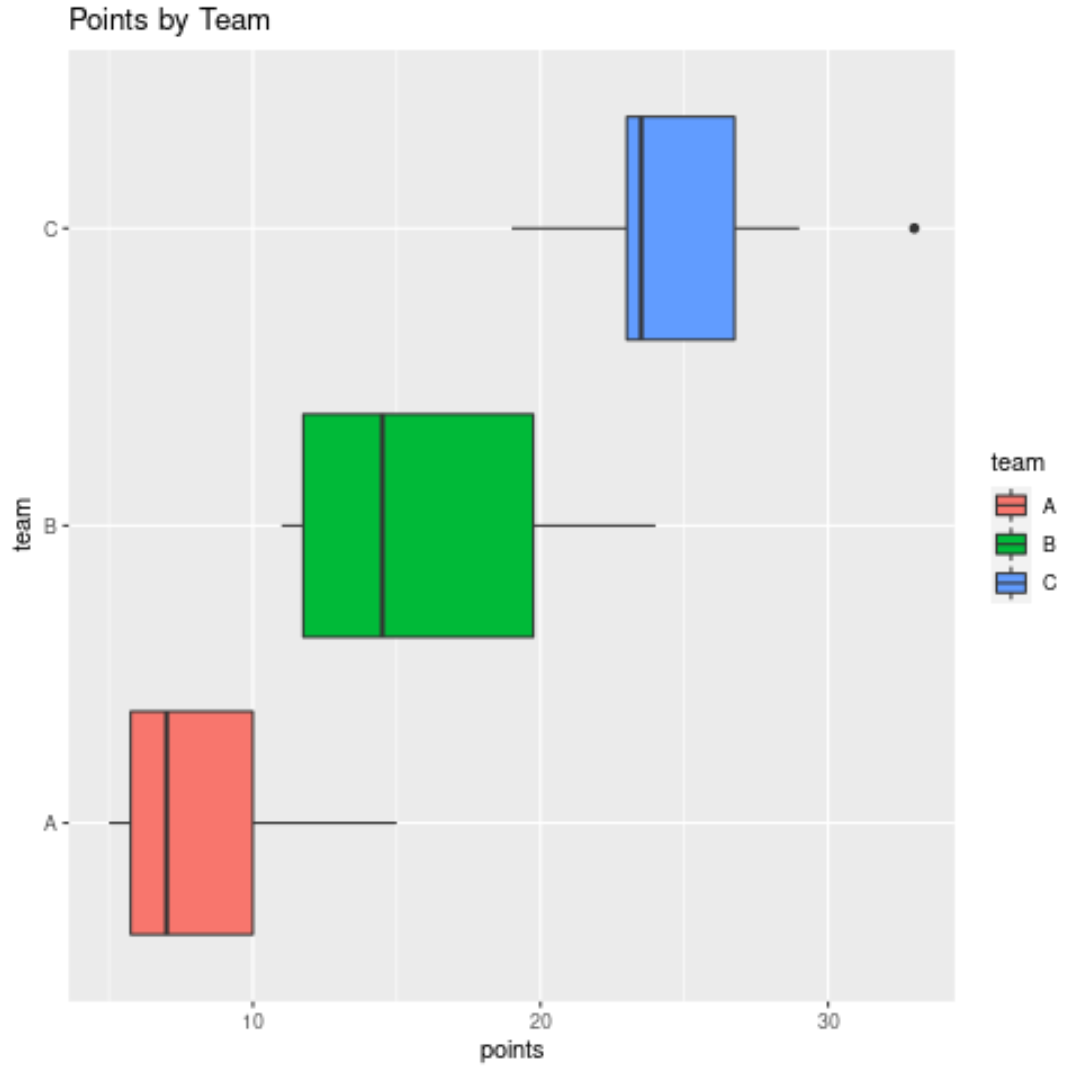R で並列箱ひげ図を作成する方法 (例付き)
並べた箱ひげ図を使用すると、異なる分布間の類似点と相違点をすばやく視覚化できます。
このチュートリアルでは、次のデータ フレームを使用して、R とggplot2で並列箱ひげ図を作成する方法について説明します。
#create data frame df <- data. frame (team=rep(c(' A ', ' B ', ' C '), each= 8 ), points=c(5, 5, 6, 6, 8, 9, 13, 15, 11, 11, 12, 14, 15, 19, 22, 24, 19, 23, 23, 23, 24, 26, 29, 33)) #view first 10 rows head(df, 10) team points 1 to 5 2 to 5 3 to 6 4 to 6 5 to 8 6 to 9 7 to 13 8 to 15 9 B 11 10 B 11
並列 R ベースの箱ひげ図
次のコードは、基数 R で並列箱ひげ図を作成する方法を示しています。
#create vertical side-by-side boxplots boxplot(df$points ~ df$team, col=' steelblue ', main=' Points by Team ', xlab=' Team ', ylab=' Points ')

引数horizontal=TRUEを使用すると、箱ひげ図を垂直方向ではなく水平方向に表示できます。
#create horizontal side-by-side boxplots boxplot(df$points ~ df$team, col=' steelblue ', main=' Points by Team ', xlab=' Points ', ylab=' Team ', horizontal= TRUE )

ggplot2 の並列箱ひげ図
次のコードは、ggplot2 で並列垂直箱ひげ図を作成する方法を示しています。
library (ggplot2) #create vertical side-by-side boxplots ggplot(df, aes(x=team, y=points, fill=team)) + geom_boxplot() + ggtitle(' Points by Team ')

また、 coord_flip()引数を使用すると、箱ひげ図を垂直方向ではなく水平方向に表示できます。
library (ggplot2) #create horizontal side-by-side boxplots ggplot(df, aes(x=team, y=points, fill=team)) + geom_boxplot() + coordinate_flip() + ggtitle(' Points by Team ')
